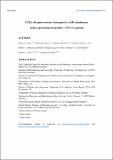Files in this item
Receptor-associated independent cAMP nanodomains mediate spatiotemporal specificity of GPCR signaling
Item metadata
| dc.contributor.author | Anton, Selma E. | |
| dc.contributor.author | Kayser, Charlotte | |
| dc.contributor.author | Maiellaro, Isabella | |
| dc.contributor.author | Nemec, Katarina | |
| dc.contributor.author | Moeller, Jan | |
| dc.contributor.author | Koschinski, Andreas | |
| dc.contributor.author | Zaccolo, Manuela | |
| dc.contributor.author | Annibale, Paolo | |
| dc.contributor.author | Falcke, Martin | |
| dc.contributor.author | Lohse, Martin J. | |
| dc.contributor.author | Bock, Andreas | |
| dc.date.accessioned | 2023-03-10T00:43:38Z | |
| dc.date.available | 2023-03-10T00:43:38Z | |
| dc.date.issued | 2022-03-31 | |
| dc.identifier | 278401296 | |
| dc.identifier | ae81dc08-0b2c-446a-a173-91649d27e540 | |
| dc.identifier | 35294858 | |
| dc.identifier | 000780311600007 | |
| dc.identifier | 85127144773 | |
| dc.identifier.citation | Anton , S E , Kayser , C , Maiellaro , I , Nemec , K , Moeller , J , Koschinski , A , Zaccolo , M , Annibale , P , Falcke , M , Lohse , M J & Bock , A 2022 , ' Receptor-associated independent cAMP nanodomains mediate spatiotemporal specificity of GPCR signaling ' , Cell , vol. 185 , no. 7 , pp. 1130-1142 . https://doi.org/10.1016/j.cell.2022.02.011 | en |
| dc.identifier.issn | 0092-8674 | |
| dc.identifier.other | RIS: urn:47026EC4CF07D4AC8540FD942F1B3ACD | |
| dc.identifier.other | ORCID: /0000-0003-3208-5347/work/110423444 | |
| dc.identifier.uri | https://hdl.handle.net/10023/27149 | |
| dc.description | Funding: A.B., P.A., and M.J.L. acknowledge funding by the Deutsche Forschungsgemeinschaft (DFG) (German Research Foundation) through SFB1423, project number 421152132, subproject C03 (P.A. and M.J.L.) and subproject C05 (A.B.), and through SFB688, subproject B08 (M.J.L.). This work was supported by the Elite Network of Bavaria, Receptor Dynamics program (to M.J.L.). S.E.A. and J.M. were members of this program. I.M. is an Anne McLaren Research Fellow. This work was supported by the British Heart Foundation PG/15/5/31110 and RG/17/6/32944 (to M.Z.). | en |
| dc.description.abstract | G protein-coupled receptors (GPCRs) relay extracellular stimuli into specific cellular functions. Cells express many different GPCRs, but all these GPCRs signal to only a few second messengers such as cAMP. It is largely unknown how cells distinguish between signals triggered by different GPCRs to orchestrate their complex functions. Here, we demonstrate that individual GPCRs signal via receptor-associated independent cAMP nanodomains (RAINs) that constitute self-sufficient, independent cell signaling units. Low concentrations of glucagon-like peptide 1 (GLP-1) and isoproterenol exclusively generate highly localized cAMP pools around GLP-1- and β2-adrenergic receptors, respectively, which are protected from cAMP originating from other receptors and cell compartments. Mapping local cAMP concentrations with engineered GPCR nanorulers reveals gradients over only tens of nanometers that define the size of individual RAINs. The coexistence of many such RAINs allows a single cell to operate thousands of independent cellular signals simultaneously, rather than function as a simple “on/off” switch. | |
| dc.format.extent | 24 | |
| dc.format.extent | 1918514 | |
| dc.language.iso | eng | |
| dc.relation.ispartof | Cell | en |
| dc.subject | G protein-coupled receptors | en |
| dc.subject | cAMP | en |
| dc.subject | Compartmentation | en |
| dc.subject | Cell signaling | en |
| dc.subject | FRET | en |
| dc.subject | Biosensors | en |
| dc.subject | Nanodomains | en |
| dc.subject | Spatiotemporal signaling | en |
| dc.subject | Diffusion | en |
| dc.subject | GLP-1 | en |
| dc.subject | QH301 Biology | en |
| dc.subject | QC Physics | en |
| dc.subject | NDAS | en |
| dc.subject | AC | en |
| dc.subject | MCC | en |
| dc.subject.lcc | QH301 | en |
| dc.subject.lcc | QC | en |
| dc.title | Receptor-associated independent cAMP nanodomains mediate spatiotemporal specificity of GPCR signaling | en |
| dc.type | Journal article | en |
| dc.contributor.institution | University of St Andrews. School of Physics and Astronomy | en |
| dc.identifier.doi | https://doi.org/10.1016/j.cell.2022.02.011 | |
| dc.description.status | Peer reviewed | en |
| dc.date.embargoedUntil | 2023-03-10 |
This item appears in the following Collection(s)
Items in the St Andrews Research Repository are protected by copyright, with all rights reserved, unless otherwise indicated.

